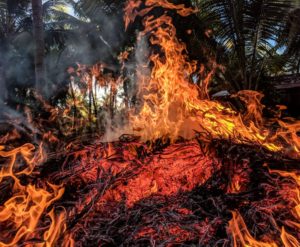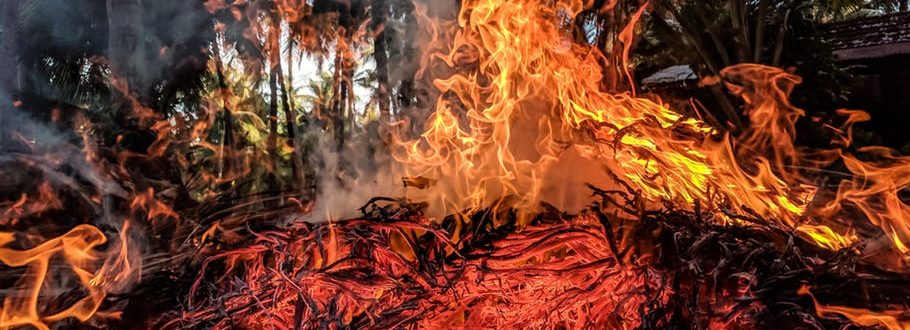Plant Adaptation and Wildfires
Many of the plants within areas that are known for wildfires will survive. However, they’ve had to adapt to the climate, making sure they’re as resistant as possible while also finding ways to grow 
The Different Ways Plants Have Adapted
There are many ways a plant can adapt to life in a wildfire-prone world. The majority of them adapt physically, gaining some sort of protection against the heat that occurs during the fiery event.
That being said, some will adapt to become more flammable. They help with the spread of fire naturally to help reduce the competition of those plants that can’t or haven’t adapted yet. They also adapt by being able to grow quickly after the fire, working with the new pH levels within the soil, gaining another advantage over the competition.
Eucalyptus is one plant species that has adapted to being more flammable on the inside through the oils. However, their leaves are hard to resist both heat and drought, so they’re more dominant over the species that can’t tolerate the flames.
Growth After the Fire
One of the biggest adaptations has been to grow quickly after the fire. Those that life in the wildfire-prone areas end to have seeds that have reserve shoots. Once the fire has wiped out the vegetation, the seeds will then sprout a new plant quickly.
In some cases, the smoke and heat can help stimulate the germination of the seeds. The orange butanolide and chamise are two of these that can sprout quickly to add life to the devastated areas.
Cape lilies will remain dormant until the flames are able to brush away anything covering them. They then blossom overnight to bring a lightness to the dark.
Shedding and Water Content
Some plants will adapt be being more resistant to the flames. They’ll shed their lower branches to help with the reduction of the spread of the fire. They can also have higher water content, helping to reduce the flames from catching hold and spreading further.
These trees can also help to prevent the initial spark, since they have the water content during drought seasons and higher temperatures. The more of these types of trees, the less chance there is of fires too frequently.
Getting the Right Frequency
While plants will do everything they can to adapt, they need to see the frequency of the fires reduced. An optimum frequency is three to 10 years. Any more than that, like the yearly fires currently happening in some parts of the world, mean the plants can’t adapt properly or they can’t grow quickly enough to help reduce the first in the future.
